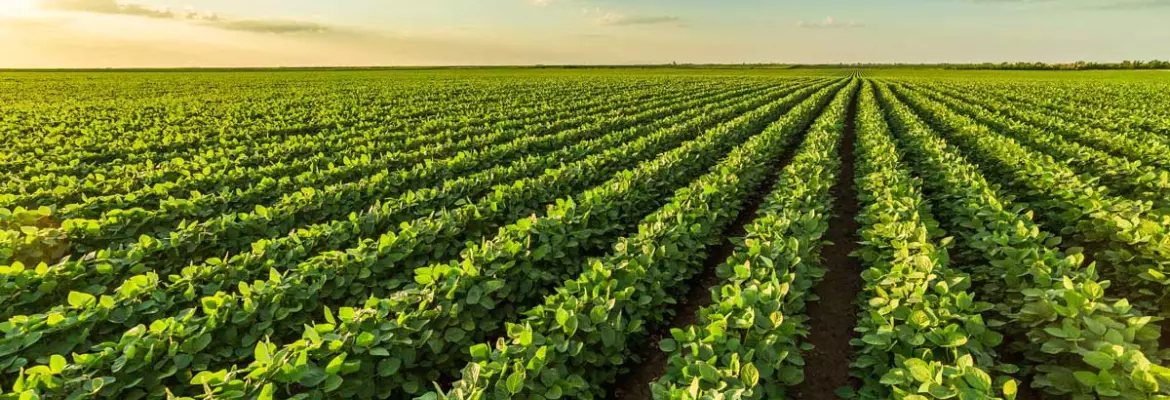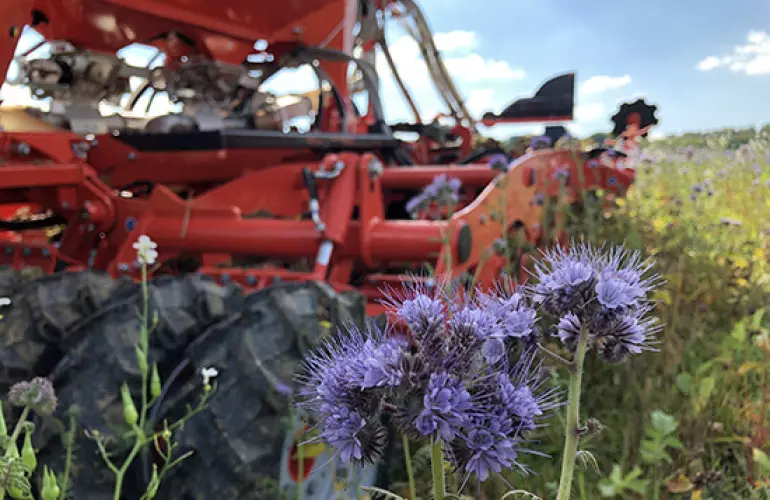
Regenerative agriculture is a type of farming that promotes healthy soils, healthy food, and healthy people. What are the guiding principes?
Regenerative agriculture is based on 6 key principles. They cover aspects related to the soil, the use or non-use of inputs, soil preparation, and crop rotation. More general criteria concern animal life, essential to a well-balanced ecosystem, as well as the broader regional production environment.
While documentation can be found concerning the principles of regenerative agriculture, there are no official guidelines. However, following work carried out by Tikehau Capital and ‘Info Durable’, or ‘ID’ (French media platform on sustainability), the following is generally agreed on:
"Pluralism, protection, purity, performance, peace, potential, progress": the 7 key terms that conceptualise regenerative agriculture for Robert Dale.
Permanent soil cover
Permanent soil cover is one of the fundamental principles of regenerative agriculture, as well as being one of the cornerstones of soil conservation agriculture. Soil cover fixes carbon in the soil, thereby preventing the creation of greenhouse gases, which cause global warming. There are numerous benefits. Organic matter from the plant cover returns to the field and improves fertility and structure. Atmospheric CO2 is captured by plants for photosynthesis. The soil’s water-retention capacity increases allowing it to capture runoff water and limit erosion, particularly during intense climatic events.

Fewer chemical inputs
Regenerative agriculture also advocates reducing, or even eliminating the use of chemical inputs and plant-protection products, like organic agriculture. Where possible, biocontrol solutions are recommended instead. Natural fertilisers, from animals (manure, liquid manure, etc.) or compost, are the preferred fertilisation products. The aim is to reduce the negative impact of chemical products on the environment: air and water pollution, etc.
Limiting tillage in regenerative agriculture
Soil regeneration in regenerative agriculture means reducing tillage. The aim is to preserve organic matter in the topsoil as well as the soil’s structure and biodiversity. This makes the soil more fertile and increases carbon content. Minimum tillage, or even direct seeding is often recommended.
Crop rotation with varied species
Alternating crops in a field not only prevents soil degradation, but it also reduces the risk of crop-specific pests and diseases. Agroforestry can be a good initiative too, if there is a market for it, as it promotes biodiversity, regulates the climate and improves soil fertility.
Integrating livestock into regenerative agriculture
One essential ingredient in regenerative agriculture is looking after the ecosystem. This includes the key concept of integrating animals into the plant-crop production system. Excreta from herds can be reintegrated into the system by being transformed into humus and used in the plant cycle. The objective is to seek synergies between the different production units through a global approach.
Taking the natural area into account
Regenerative agriculture is also about creating an ecosystem that guarantees satisfactory social and economic conditions. It is in total harmony with sustainable development and agriculture. The underlying principles should be considered as part of a more global system, especially the geographical area, i.e., developing the farm within its regional context.
Sources: https://lordingtonparkagronomy.co.uk/robert-rodale-regenerative-agriculture-uk-soils/
